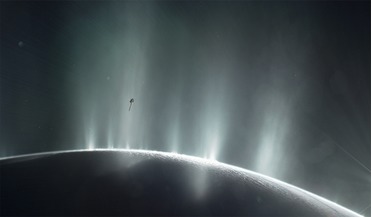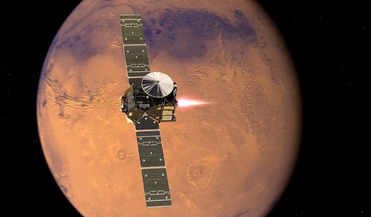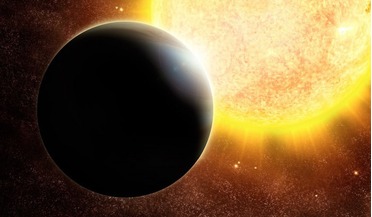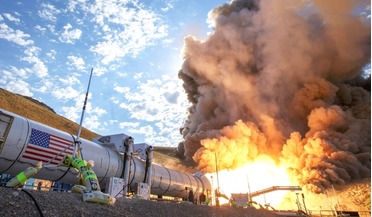 December 2014
MAVEN and the evolution of Mars
December 2014
MAVEN and the evolution of Mars
... delivered water and other ‘volatiles’ in the form of ice, even after the solid planets had formed. Volcanic activity continued to contribute to their atmospheres as well. Hydrogen was likely abundant in these early atmospheres, but the absorption...
 06 November 2017
Enceladus more active than previously thought
06 November 2017
Enceladus more active than previously thought
...the planet’s ice moon Enceladus is even more active than initially anticipated. Through observations of plumes ... a common process and is responsible for heating the most volcanically active body in the Solar System: Io. However, this process alone...
 12 February 2021
Water vapour spotted escaping from Mars' atmosphere
12 February 2021
Water vapour spotted escaping from Mars' atmosphere
... the martian surface. Clorine- or sulphur-based gases are of particular interest to scientists as they are possible indicators of volcanic activity. However the HCl found by Korablev and colleagues was detected in different locations at the same time...
 February 2016
How to Build Planets
February 2016
How to Build Planets
...a super-Earth type planet which appears to exhibit extreme variations in brightness temperature, attributed by some to be characteristic of volcanic activity. 55 Cancri differs from our own Solar System in that the main star has a red dwarf companion...
 November 2016
Moon or Mars - NASA’s next logical step?
November 2016
Moon or Mars - NASA’s next logical step?
... was the first trained scientist to walk on the Moon. During the Apollo 17 mission he collected evidence of lunar volcanic activity. Lunar exploration in the coming years will be essential preparation for long journeys across our Solar System...
 April 2025
Racing to the Moon
April 2025
Racing to the Moon
... return to Earth. Among other things, the Chang’e-5 near side sample return secured evidence that lunar volcanic activity occurred much more recently than previously believed. This year’s Chang’e-6 far side sample return will...